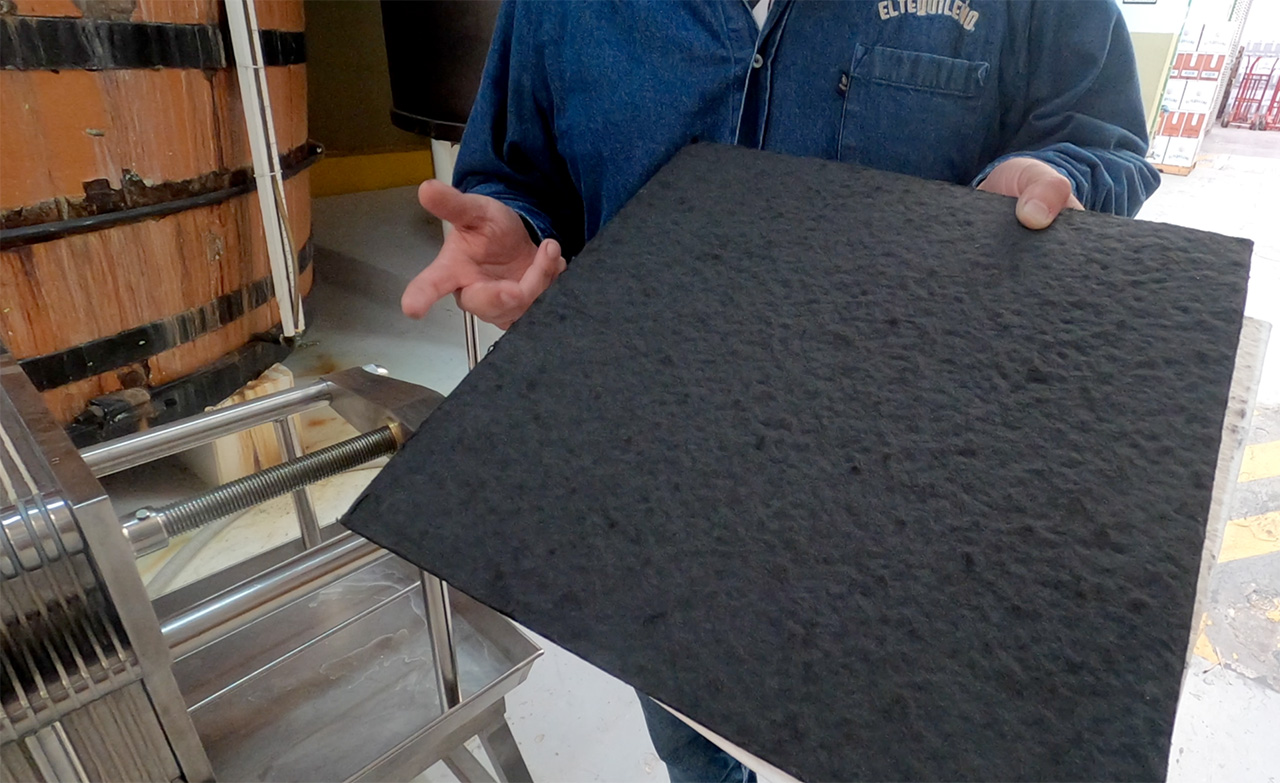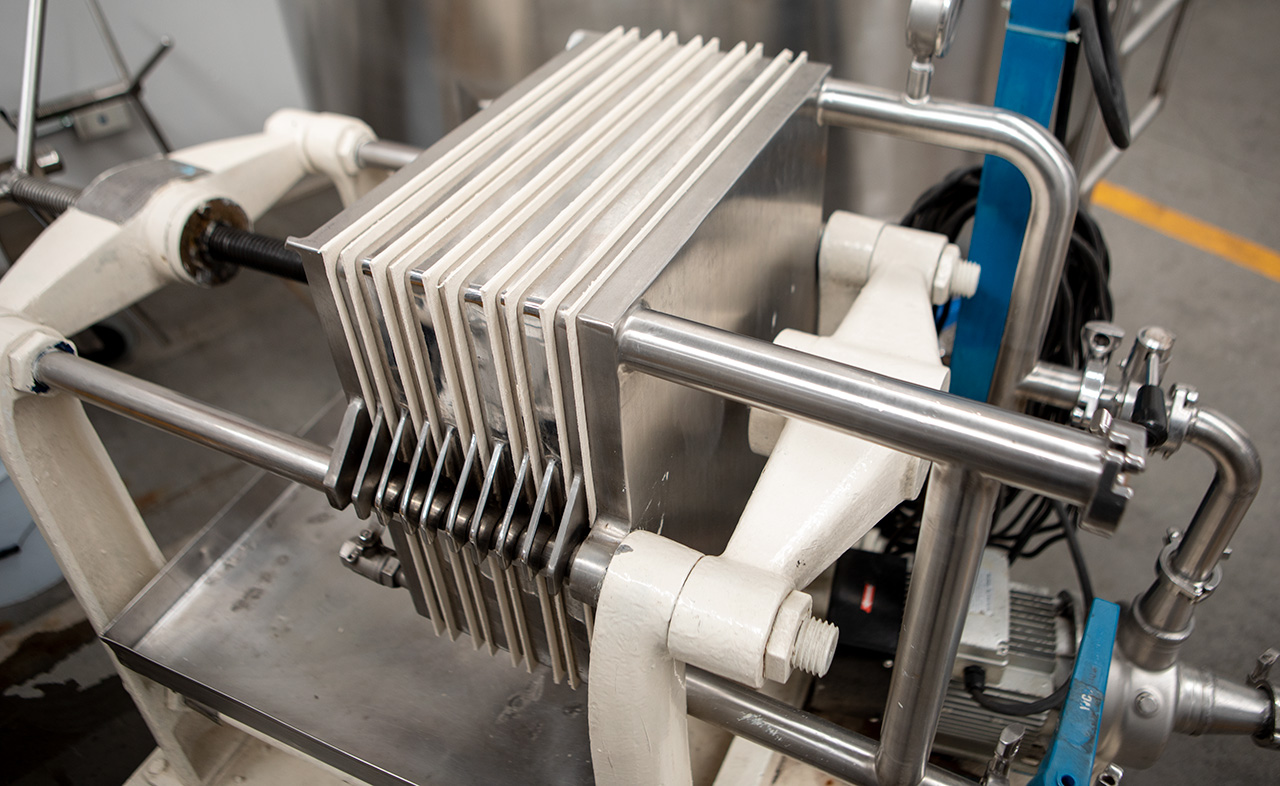

Tony Salles, Master Distiller at tequila El Tequileño, had a dilemma. His brand had recently achieved wider distribution outside of Mexico and into Canada, and some customers to the North were complaining that they could see solids in their bottles.
 He knew that this was because the fatty acids that hold aroma and flavor components, called esters (natural components in the agave plant) had solidified in the freezing temperatures. He wasn’t exactly sure what to do about it.
He knew that this was because the fatty acids that hold aroma and flavor components, called esters (natural components in the agave plant) had solidified in the freezing temperatures. He wasn’t exactly sure what to do about it.
“We’ve mostly sold in Mexico, where it is warm, so in 60 years of producing we never had this issue before,” Salles says.
When it comes to removing solids, some spirits producers choose a process called cold filtration, which chills the liquid to around freezing (26 to 32 degrees Fahrenheit), and then scrapes the solids from the top. However, Salles believed this process would change the profile of his tequila.
“It’s like when you put chicken soup in the fridge overnight,” he says. “If you scrape the fat from the top of the broth and reheat it, it will not taste the same.”
Tequila, like most other spirits, is usually filtered before bottling. Producers often use paper, cellulose (a more porous plant-based material), or activated carbon, to remove any unwanted particles left from the production process. It can also improve the texture, and create brilliance in the tequila. But filtration is rarely talked about as an essential step in tequila making.
“Filtration is a process that has been learned generation to generation based on the technologies that we have at the time,” says Salvador Rosales, Jr. of Tequila Cascahuín, who runs the distillery along with his father, Salvador Rosales Sr. “First we look to remove any unwanted particles, usually using paper, and then it’s a matter of what kind of profile you are looking to create.”
Some methods are known to cut the alcohol burn, or make the tequila smoother for drinking, such as activated carbon, he says. But it may also take a little bit of the aromas and flavors away, making the tequila simpler. For some consumers, this is preferred.
The recent rise of cristalinos – aged tequilas that are filtered until they appear clear, like a blanco – have brought more attention to filtration in tequila. Producers of these products often rely on activated carbon to strip the color away, knowing that many flavor and aroma components will also be lost. This creates a “smoother” tequila.
While filtration is the defining step in the process for cristalinos, in other expressions it is considered a final touch. Except when you have customers worried about cloudiness.

“Activated carbon has been widely used in tequila to remove the ‘haze’” (or fatty acids),” says Eduardo Espinosa de los Monteros of Filtration de Proceso, who has 15 years of experience filtering high-value liquids.
He points out that there are grades of carbon, such as micropores and macropores. These have different capabilities for “adsorption”, or the concentration of molecules on the surface. Micropores help in removing odors, whereas macropores remove stronger colors and pronounced flavors, Espinosa de los Monteros says, which is presumably better for cristalino production. But all carbon filtration will change the profile of a tequila to a certain extent, depending on the concentration used and the amount of contact it has with the liquid, he notes.
That’s why Tequileño’s Salles wasn’t considering carbon filtering for his regular line, even though he recently started producing a cristalino that uses carbon filtration to remove the color left from barrel aging.
He already uses paper, cellulose, polypropylene (a type of thermoplastic), and a very old ceramic filtration method he learned from his father to make sure that his tequila was clean and brilliant. So when it came to the issue fatty acids, he was thinking more about education.
“Tequila is a natural product, with fats that contain flavor. It is not the same as vodka, which is valued for its neutrality,” Salles says.
But to address his customers’ comments, he ran an experiment using cellulose to filter his “ordinario” (the liquid produced in the first distillation of the tequila making process.) The cellulose vendor assured him that filtering at this stage would eliminate the issue of solids forming in cold weather.
Some of the ordinario was 100% filtered by the cellulose, some at 75%, 50%, and finally 25% filtered. (A photo of the sample bottles is at the top of this story.) His team tasted all the samples against their normally produced blanco. The consensus came quickly: even at the 25% filtered the tequila did not taste the same.
“We lost some complexity and flavor,” Salles says. In the end, they decided not to change their process.
Although Tequileño decided not to filter their ordinario, a number of other producers choose this method to remove unwanted particles, and prevent cloudiness in their finished product.
“We did a lot of trial and error,” says José Valdez, General Director & Maestro Tequilero of Tequila Partida. “For us, carbon filtering and cold filtering removed too much flavor.”
Instead, Partida uses paper and cellulose filters to clean their core line tequilas and prevent cold-weather haze. (They too recently started producing cristalinos, and use carbon filtering for those products.)

At Distilleria Cascahuín, they steered away from cold filtration of their core Cascahuín line in Mexico, even though they have a system on site.
“We use cellulose cartridges to filter by gravity, not even using a pump, so it gently removes the particles, but does not change the profile of our tequila,” says Rosales Jr.
They use cold filtration for some products produced for export, except when it comes to Cascahuín exported to Japan. Since the importer was already aware of esters and their solid-making potential, they decided to put a sticker on their bottles, informing customers that these fatty acids are a normal and natural part of the tequila making process.
Over at the Feliciano Vivanco Distillery, NOM 1414, Master Distiller Sergio Cruz takes a similar approach. For finer tequilas, they use a gentle filtering method, allowing the liquid to pass through cellulose using gravity. The aim is to remove any unwanted particles that may come from tanks or barrels.
“These products usually don’t need much filtering because we take care through every part of the process,” Cruz says.
However, when it comes to more economical products, he may pump the tequila through cellulose and activated carbon plates to clean up the rustic profile and smooth out the flavors.
“It also depends on the product, and the region (where it is sold),” says Cruz. “Here in Arandas, people like a tequila where the agave and the alcohol are more present, so for them I don’t really need to do anything.”
That brings us back to Salles’ predicament. Will education around tequila production lead customers to see solids floating in their bottles as a sign of artisanal flavor? We’ll have to see.
Master Distiller Tony Salles explains the various methods of filtration common in the tequila industry:
Our Filtration Notes
We were fortunate enough to taste Tequileño’s filtered samples from their experiment. Here are our notes:
– Comparing the 100% ordinario filtered sample against their normal product, both the aroma and flavor are noticeable muted. There is also a mouthfeel change: It smooths it out somewhat, but also flattens it. There are not the same spikes of flavor you sometimes get from a tequila, especially in the finish.
– Even at 25% filtered there is a slight flattening of the aroma, but less affect on the mouthfeel.
– The 50% filtered version is possibly a happy medium if you are looking to diminish any unwanted aromas/flavors, while still keeping some brightness in the profile. However, if it is a well-made tequila you may lose some complexity.
Common Questions (and Answers)
– Is it OK to put my tequila in the freezer?
Our opinion? No. Doing this could cause the natural fatty acids in the tequila to separate out. These contribute aromas and flavors to the tequila. We think it’s best to leave the chill filtration to the experts. However, it’s your tequila, so drink it how you like it!
– My tequila is cloudy/has particles it it? Is it still good?
Usually, yes. If you shake up the bottle while it is at room temperature the particles or cloudiness should dissipate as the fatty acids are re-absorbed into the liquid. If there are blue particles floating at the top, that’s usually copper from the still. When we see this happen we just carefully pour it out of the bottle and continue drinking what’s left.
The post Tequila Filtration – The Good, Bad & Sometimes Cloudy appeared first on TasteTequila.